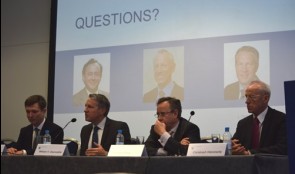-


PERI-IMPLANT BONE REACTIONS TO DIFFERENT IMPLANT MACROSTRUCTURE AND NECK CONFIGURATIONS—A 5-YEAR STUDY WITH 494 IMPLANTS
Objectives: After implant placement, bone remodelling can be observed along the entire implant, but it is more dominant at the level of the implant neck. To date, there have been few long-term studies on the effectiveness of different implant necks and macrostructures for preserving marginal bone. The primary endpoint of this study was to clinically investigate the influence of different implant macrostructure and neck configurations on peri-implant marginal bone loss. Methods: Cylindrical and tapered implants were compared. Statistical analysis was performed using IBM SPSS version 20. Descriptive analysis included the number of implants and mean marginal bone loss for all groups. Results: Cylindrical implants with an external hexagon connection(n=321) featured the greatest marginal bone loss (distance between implant shoulder and bone crest (DIB) 2.341mm ± 1.184). Cylindrical implants with an internal hexagon connection(n=86) displayed less marginal bone loss compared to external connections with the same macrostructure (mean DIB 2.193mm ± 1.121). In contrast, tapered implants with an external hexagon (n=33) showed less bone loss (mean DIB 1.422mm ± 1.063) than those with an internal hexagon (n=54) (mean DIB 1.951mm ±0.793). Statistically significantly differences were found between external hexagon implants with different implant macrostructures. Conclusion: There was a trend for peri-implant marginal bone loss to be directly affected by implant macrostructure. Tapered implants may lead to less marginal bone loss after 5 years compared to cylindrical implants, and may be considered as safe and predictable alternatives. -
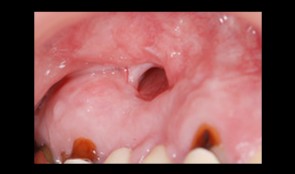

Total reconstruction after closure of maxillary sinus fistula
Dr. Thomas TruningerBefore starting the full-mouth reconstruction, the oral-maxillary sinus fistula (oroantral fistula) has to be closed. -
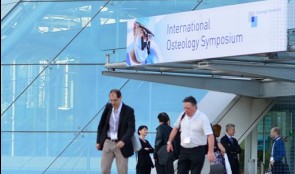

Save the Date: International Osteology Symposium 2016 in Monaco
Osteology returns to a beautiful location: from 21-23 April 2016 the International Symposium will once more take place in Monaco. The International Osteology Symposium is a congress held every three years. The Symposium focuses on bone and tissue regeneration and has gained a reputation for high level science, first class speakers and extensive practice-oriented training. It is also well known for its beautiful congress locations and attractive social events. The program and further information will be published soon. In the meantime, save the date and enjoy the impressions from the International Osteology Symposium in 2013! Photogallery Congress movie -


Osteology Foundation goes social
Through social media its now easier than ever to follow what interests you, to stay up to date with the latest trends and news, and to share with friends and collaborators what might be interesting for them or to find out what they think. The Osteology Foundations official profiles help followers to stay in contact with the community and to keep interested researchers and practitioners, as well as partners from industry, universities and associations, informed about the latest activities and news. Check out the Osteology Foundations profiles on Facebook, Google+, Twitter and LinkedIn and make sure you Like and Follow us to receive always the latest updates, deadlines and news! See you there! -
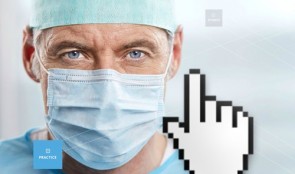

Osteology Monaco 2016 - we are online!
We are excited to announce that today the website for the International Osteology Symposium 2016 in Monaco went online! Discover the exciting programme under the motto Learning the WHY and the HOW in Regenerative Therapy with international top speakers, as well as all other important information concerning our Symposium. ► Osteology Monaco online check it out! The website will be updated continuously, and you will find the latest information there. Through the website, and all other communication channels, such as E-mailings, Social Media and our Website, we will keep you always informed about updates and approaching deadlines. Online registration on the Osteology Monaco website will open in October 2015. -


Meet Osteology at the Europerio in London
Not long until the EuroPerio 8 Congress in London starts. And Osteology will also be there with the latest news about the Osteology Symposium 2016 in Monaco, new funding possibilities for researchers - and a sweet surprise... The EuroPerio Congress has established itself as one of the worlds leading conference in periodontology and implant dentistry, and has become a triennial fixture on the meetings calendar. The 2015 meeting takes place in London, and is hosted by the British Society of Periodontology for the European Federation of Periodontology. Up to 10000 delegates are expected. The organizers have put together an impressive program with to 6 sessions will run in parallel throughout the meeting. The Osteology Foundation will be present at the congress with its own booth in the exhibiton area, presenting the latest news about the preparations of the Osteology Symposium 2016 in Monaco, new funding possibilities for researchers that will be available soon - and a sweet surprise... Dont miss the chance, and see us in London at booth No. 52b Final program Europerio website Press Conference For representatives of the media an Press Conference will take place during the EuroPerio 8 in London. Registration Further information -

Osteology Press Conference in London
The Osteology Foundation revealed numerous innovations and plans at a press conference held as part of the 8th EuroPerio Congress in London. Announcement of the scientific program for the International Osteology Symposium 2016 in Monaco was one of the highlights. Interesting for scientists undertaking research on oral regeneration are the Foundations new Large Clinical Grants, which were officially unveiled for the first time in London. The changes at the top of the Osteology Foundation were another focal point and provided an ideal opportunity for reviewing the recent years, but also for looking forward to the future and the Foundations strategic advancement. The Osteology Foundation, which was founded in 2003 by Dr Peter Geistlich and Geistlich Pharma AG in Switzerland, has continuously developed and has grown significantly since its inception. Linking Science and Practice Under the motto Linking Science Practice in Oral Regeneration, the Foundation now essentially comprises four key areas in which it is active, Professor Christoph Hmmerle explained in London: Support for researchers, education for practitioners, training for scientists and best practice in science. An independent Foundation Board comprising 12 internationally renowned experts maps out the strategy and activities, explained Hmmerle. The Board is split into three committees (Science, Training, Communication), operatively headed by an Executive Board of four, and it is supported by an Expert Council with 33 members from 13 countries, Hmmerle continued. Change after 12 years Christoph Hmmerle was President of the Foundation since it was established 12 years ago. His period of office ended at the end of May 2015. His successor, Professor Mariano Sanz, takes office from June 2015, with whom the Foundation is in the best hands, Hmmerle stressed. Sustainable growth and continuous development According to Mariano Sanz, under Christoph Hmmerles leadership the Foundation succeeded in becoming well known for the highest quality in science and also in practice. I dont intend to change anything, but will continue to pursue the set course and work to raise the profile of the Foundation, as well as to drive forward its geographical expansion, Sanz announced in London. Here it will be important, he explained, to focus more on new technologies and media to further assure sustainable growth and continuous development. Along with the change at the top, there are other personnel changes at the Osteology Foundation: Myron Nevins, Friedrich Neukam and Massimo Simion will step down from the Foundation Board when their terms of office end. Their successors are Pamela McClain, Frank Schwarz and Istvan Urban. Stronger together Osteology collaborations Collaborations, such as those with the European Federation of Periodontology (EFP), the organisers of the EuroPerio Congress, are of enormous importance to the Osteology Foundation, Sanz explained. Both sides can profit from the partnership. Together we are stronger, he stressed. As a prime example for the successful cooperation, Sanz cited the 10th EFP Consensus Workshop, which took place in collaboration with the Osteology Foundation. The proceedings resulting from the workshop are of great relevance and the publication has been met with keen interest among practitioners, Sanz pointed out. Additional collaborations are in progress worldwide with various professional societies, such as the American Academy of Periodontology (AAP) in North America, the Chinese Stomatological Association in Asia, the IberoPanamerican Federation of Periodontics (FIPP) in Latin America, as well as the Association for Dental Education in Europe (ADEE). Congress highlight in 2016: International Symposium in Monaco In his role as Chair of the Education Committee, Mariano Sanz also introduced the scientific programme for the International Osteology Symposium 2016 in Monaco. Over 2500 participants from 60 countries are expected at the congress, which is held every three years and for many is a notable event in the congress calendar. The Scientific Chairmen of the congress are Friedrich Neukam and Myron Nevins. No fewer than 85 internationally renowned speakers will discuss the most important topics surrounding oral regeneration and the latest insights from science for use in practice, Sanz explained. The programme will be supplemented by a large poster exhibition, practical and theoretical workshops, as well as the Master Clinician Courses held for the first time. The latter are included in the registration fee. Registration will open in October 2015 via the websitewww.osteology-monaco.org, as Sanz confirmed. Abstracts for posters and the Research Forum, for which the best research work presented will be awarded prizes, are welcome from 1 July 2015. New for established research groups: Large Clinical Grants Also when it comes to promoting science, which is one of the Osteology Foundations core tasks, there was exciting news to report, which is probably mainly of interest to the established research groups. Professor William Giannobile, Chair of the Scientific Committee of the Foundation, introduced the Large Clinical Grants, which scientists can apply for in 2015 for the first time. The Large Clinical Grants are worth up to 350,000 Swiss Francs for a maximum project duration of three years. Detailed information for application can be found on the Foundations website from July 2015 on. The application deadline is 1 December. Another new feature of scientific promotion are the Osteology Research Scholarships, which offer up-and-coming researchers a one-year stay at one of the Osteology Scholarship Centres. The first round of applications in 2015 is already over, said Giannobile. But applications can be submitted again from July onwards. The application deadline for the next round is 1 December 2015. Besides the new funding opportunities, the established Young Researcher Grants and Advanced Researcher Grants are still on offer, William Giannobile clarified. Comprehensive information on these grants, aimed towards scientists on different rungs of the career ladder and varying in their level of experience required, may also be found on the Foundation website at www.osteology.org. Career milestones: Osteology Research Academy Professor Reinhard Gruber, another member of the Osteology Board of Trustees, presented the Osteology Research Academy. This is an intensive course lasting several days in which prospective scientists are taught research practice and methodology. More specific research topics pertaining to bone generation are also addressed in an Expert Module. An essential aspect of the courses is the informal atmosphere and the direct contact with experienced scientists, which is much appreciated by the participants, Gruber explained. Questions are discussed and case studies examined in small groups. The concept is met with great interest the world over, according to Gruber. Last years course participants came from 15 different countries on four continents, he recounted. That is a perfect way of establishing new contacts and networks. After the course, one of the participants enthused that the course had changed his life, Reinhard Gruber recalled. Another participant looked back at the courses as milestones in his scientific career. This participant feedback is the best sign that we are on the right track with our course concept. That is why we are also planning to stage the Research Academy in North and South America in the coming years, Reinhard Gruber declared. Professor Christoph Hmmerle at the Osteology Press Conference in London Presenting the key activities of the Osteology Foundation Professor Mariano Sanz talked about the successful collaboration with the EFP Mariano Sanz also presented the programm of Osteology Monaco 2016 - the international symposium next year. Professor William Giannobile described what the Osteology Foundation has to offer for scientists Professor Reinhard Gruber presented the Osteology Research Academy The four Board Members as well as Kay Horsch, Executive Director of the Foundation, were answering questions after the presentations For representatives of the media: Download Press Releases -
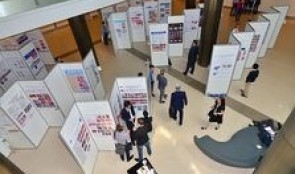

Osteology Monaco 2016 - call for abstracts!
The application for Poster Presentations and the Research Forum is open! We invite investigators within the field of regenerative dentistry and dental tissue engineeringto submit abstracts. Deadline is 1 December 2015.The three best Research Forum presentations in each category will be awarded. More information Application form -

Osteology Expert Meeting
Internationally renowned experts with great experience and interdisciplinary expertise in simulation gathered in Zurich for the 1-day Expert Meeting to discuss the topic and share their expertise in this field with theFoundation Boardand representatives of theExpert Councilof the Osteology Foundation attending the meeting. The Osteology Foundation organizes an Expert Meeting every year to discuss a topic either of high relevance for science and practice in oral regeneration or of importance for the future development of the Foundation and its activities or the dental field in general, as was the case at the 2015 meeting. The aim of the Expert Meeting on simulation in training and education was to evaluate the state of the art in other disciplines, to find out which new possibilities current developments and technologies allow, and the consequences for the Osteology Foundation on the one hand, but also for the whole field of professional training and education in dentistry, on the other. External speakers and experts invited to the 2015 meeting wereProfessor Amitai Ziv, Israel,Professor Margaret Cox, UK,Professor Gabor Szekely, Switzerland,Dr David Joseph, France, andArnaud Cosson, France. In addition,Dr Stefan Tuchschmid, Switzerland, joined for the discussions.Dr Franck Renouard, France, Board Member of the Osteology Foundation, gave an introduction to the subject area, emphasising the overall importance of training. To err is human Professor Amitai Ziv, Founder and Director of theIsrael Centre of Medical Simulation(MSR), and also a veteran combat pilot and trainer from the Israeli Air Force gave a truly eye-opening talk, demonstrating different applications of simulation in training and the impact they can have in the practice. As a medical professional, he demonstrated the crucial importance of medical simulation, but also being a pilot, he placed a special focus on lessons learned from the aviation field. In late 1999, the important report on patient safety To Err is Human was issued by the US National Institute of Medicine, Ziv told the audience. It indicated that health care is far less safe than it should be, and that deaths due to medical errors in the US number almost 100,000 annually. The report triggered a massive response, and simulation in health care has grown rapidly ever since. Today simulation is used to reproduce real patient experiences and encounters using guided and controlled simulation-based scenarios, Ziv continued. It offers a safe and mistake-forgiving environment where trainees can learn from their errors without risking harm to real patients. Simulation provides a hands-on empirical educational modality, enabling controlled proactive exposure of trainees to both regular and complex, uncommon clinical scenarios. It also provides an opportunity for team training, which is important for patient safety, but is seldom addressed in traditional medical education. Another important benefit is the reproducible, standardized, objective setting it provides for assessment purposes, Ziv added. He demonstrated the impact of the training by showing examples from his institute, the MSR, which operates as a national simulation centre conducting mandatory training and assessment programs in multiple clinical fields. At MSR they use actors, models and virtual techniques to simulate a huge variety of training situations. Rapid increase in computational power Professor Gabor Szekelyin his presentation provided an introduction into the technical aspects of simulation for medical training, what is possible now, and what may be possible in the future. Szekely is head of theMedical Image Analysis and Visualization Groupat the Swiss Federal Institute (ETH) in Zurich and is also Chairman of the Swiss Institute of Computer Aided Surgery. The rapid increase in computational power available, as well as current capabilities in computer graphics and virtual reality, enable the use of advanced, complex simulation systems, Szekely explained. As a result, simulation is set to become a useful tool in everyday clinical practice, efficiently assisting surgeons in dealing with difficulties in the operating room. Szekely presented examples for the development of surgical simulators, and the major of technological components necessary for their development. Medical simulation mainly concentrates on minimally invasive procedures, he explained, because there are still many obstacles towards creating realistic haptic training simulators for open surgery. Implementation in the dental field Professor Margaret Cox, Professor of Information Technology in Education at Kings College London, who has developed educational software for more than 40 years, presented a haptic device that she and her working group have developed for dental education. The aim of thehapTEL projectis to develop and evaluate a haptic environment for preparing cavities in a virtual tooth. The outcome of the project included setting up 14 fully functional hapTel curriculum workstations, which have been integrated into the dental undergraduate curriculum for six years, explained Cox. Educational evaluation results showed that the students who learn on the hapTEL workstations performed just as well as those learning in the traditional Phantom Head laboratory, with the added advantage of being able to review their progress at any time and seeing exactly how well they are doing. Cox also reported that since July 2011 the work of the project has been extended and modified hapTEL work-stations now enable students to learn how to give injections. Simulation of implant placement Another example where simulation is used, was presented byDr David Josephfrom the University of Nancy. He presented initial results obtained with a haptic simulator (VirTeaSy) that has been used to train and evaluate students in implantology. They observed improved performance in students who trained on the simulator with results close to those of experienced operators (Joseph et al. Biomed Res Int 2014). Implant placement simulators are now commercially available, said Arnaud Cosson, CEO ofHRV, the French company producing and marketing the simulators in combination with a 3D realistic immersive environment and the corresponding software that offers about 70 exercises in which realistic clinical situations are simulated. Experience with surgical simulators The participants of the meeting had the opportunity to try out an arthroscopy simulator used in orthopaedics. The highly realistic haptic simulator presented by the Zurich-based companyVirtaMed demonstrated the technical possibilities in the field of simulation. Drawbacks in current education During workshops in the afternoon, the Osteology Foundation Board and members of the Osteology Expert Council took the chance to discuss the topic in small groups with the invited experts. The discussions revealed drawbacks and deficiencies in current training at universities, but also in continuing education for practitioners in the dental field. Both recognition of the importance of simulation in dentistry, as well as the current technologies is still not common, the experts agreed. In discussions, the participants of the Osteology Expert Meeting came to the conclusion that various types of mistakes can be avoided through more extensive or better training. Three type of mistakes were identified: mistakes caused by lack of knowledge, mistakes arising from lack of experience, and mistakes relating to attitude. As general problems that exist in training students, the following points were listed: the availability and heterogeneity of cases, limited personal resources, and the impossibility of re-doing procedures from scratch in case of mistakes. In addition, the training of soft skills and reflection on mistakes is lacking in student education, and interdisciplinary education is often completely neglected. The participants of the Osteology Expert Meeting in Zurich agreed that there is a great need for simulation in dental education in two different areas of expertise: Firstly, for the training of processes, simulating stress, and using soft skills in different clinical situations. And secondly, realistic haptic training of different procedures and practical skills, where simulation is to be used in combination with existing and well-established techniques. Consequences for training in dentistry? After the presentations and discussions with the experts, the Osteology Board and Expert Council arrived at the conclusion that simulation in training is certainly something that should not be neglected. Deficiencies in current training and education in dentistry exist and current methodology can be improved. How these deficiencies can be eliminated and the role the Osteology Foundation could play, remains open and has to be discussed further. The Osteology Foundation thanks all experts, speakers and contributors to the Expert Meeting for sharing their knowledge and opening up new perspectives for training and education in dentistry. -


Osteology Education Grants 2016 – apply now!
Apply now! Application deadline for 2016 Education Grants is 1 December 2015. Applicants will be notified whether their application was accepted by 15 February 2016. Further information about the Osteology Research Academy Courses The Osteology Foundation calls for applications for Education Grants for 2016. The Osteology Education Grants are offered to support postgraduate education in the field of oral tissue regeneration. All young clinicians and basic scientists with an academic affiliation are invited to apply. The amount of funding is 2500 Swiss francs per person for participation in theOsteology Research Academycourse in Lucerne, and 2000 Swiss francs per person for participation in the courses in Boston and Berne or Vienna (final location will be announced in the course of this month). The grants are spoken based on the review of a curriculum vitae, a publication list, motivation letter, a copy of graduation certificate and a recommendation letter. Financial needs are also taken into account. For detailed information about how to apply visit theOsteology Education Grant websiteand check out theApplication Guidelines.










